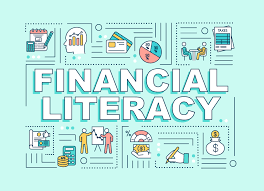5 Ways to Build Your Kid’s Financial Literacy
Today’s kids are tech savvy, media savvy and well-acquainted with how to operate in a modern world, but one area in which many of them lack skills is financial literacy.

Basic day-to-day finance skills are hard to model in a changing world where topics like currency type and payment methods are always in flux. A 2019 report by the FINRA Investor Education Foundation showed that, between 2009 and 2018, there was an 8% drop in the number of respondents who could answer questions about simple financial topics. In addition, lack of funding at the elementary and high school levels often means that age-appropriate finance courses take a backseat to core subjects or become ancillary parts of the curriculum.
So, what’s a parent to do to prepare their kids for a strong financial future? Start with these five low-key approaches.
1. Tap into their love of history
Alexander Hamilton. Heard of him? Well, your kid probably has. In the six years since Lin-Manuel Miranda’s hip-hop musical Hamilton entered our pop-culture zeitgeist, the first Treasury Secretary has become a cultural touchstone for anyone with a Disney+ account.
If your child is into history or, at the very least, intrigued by it because of a play or show they’ve watched, lean in and meet them where they are by sharing books, documentaries and online resources that go deeper. You can focus on fun facts to build their historical appreciation of money and where it comes from, which goes a long way toward picking up other financial-literacy skills.
For example, have you ever wondered what the story is behind the dollar bill in your wallet? Introduce your kid to currency tracker Where’s George?, which also allows you to follow where your dollar bill goes after you spend it. That’s living history in your back pocket.

2. Make it tactile
Don’t just share pictures of money with your kids and explain the various denominations; show them the money (cue Cuba Gooding Jr!). Get out a variety of coins and bills, then spend some time looking closely at the elements on each piece of currency. Every symbol and marking has a special meaning, so help them decode each one. Let them make a tracing or paper rubbing of coins, or even design their own currency.
3. Involve them in daily financial activities
You don’t have to hand over your wallet to teach kids about money, but you absolutely should talk them through basic, everyday transactions and purchases. This way, you can help make money a tangible item rather than an abstract concept. Let them watch you write a check. Talk them through how to use an ATM. Coach them on proper credit card use at a point-of-sale. Every moment in which you’re spending money, mapping out a grocery budget or making plans to save for a purchase is a teachable moment.
4. Gamify their spending and saving skills
“Because saving is good for you” is NOT the argument you make to a 10-year-old sitting on a $100 birthday check from grandma. That money is as good as gone if you don’t find a way to deposit said birthday check in a 529 plan before they notice. Enter gaming.
Kids are more likely to build and stick with a good habit if they practice it for at least two to three months. So make it fun by awarding points or offering some other incentive for saving money. For example, you could match every $5 put into savings up to a certain amount. Or your “game” could be as simple as awarding a certain amount saved with a small treat or activity. If you want to up your gamification game, try fun savings apps like iAllowance, PiggyBot or Bankaroo.
5. Encourage entrepreneurship
Dollars hit differently when you’ve actually earned them. Encourage your child to follow their entrepreneurial spirit to help them value what goes into their savings account. Does your child have an idea for an app? Do they want to walk neighborhood dogs and care for pets? Perhaps they’re a budding inventor. No matter what their interest is, help them get started by mapping out a very simple plan for their idea. Write it down, come up with a budget and timeline, and help them create some simple plans they can act on. Once those earned dollars start rolling in, empower your child to make smart saving and spending decisions that will last.
Source: entrepreneur.com



